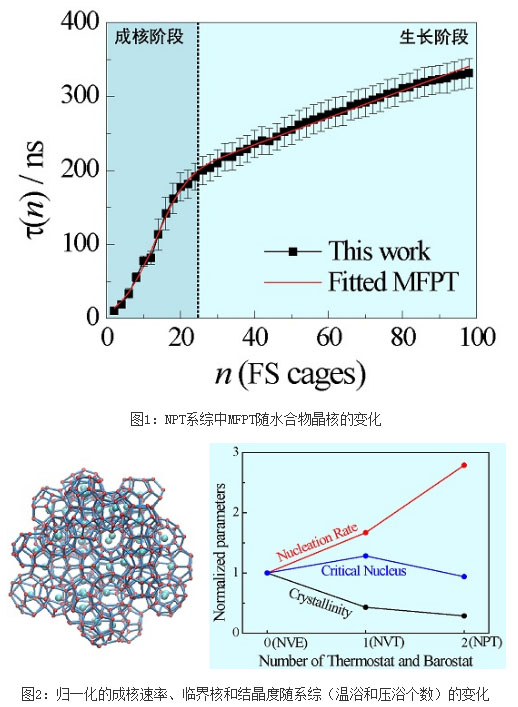Methane hydrate, commonly known as flammable ice, is a crystalline compound formed by water molecules connected to a cage structure through hydrogen bond interactions and filled with methane molecules. It is usually distributed in submarine sediments and in permafrost on land. The nucleation kinetics of methane hydrate has important implications for the storage and extraction of hydrates, the development of kinetic inhibitors, and the design of oil and gas transportation pipelines. Molecular dynamics simulation is one of the important methods for studying hydrates. The physical properties of the macroscopic state of the simulation system can be statistically averaged from the physical properties of different microscopic states. The ensemble is a collection of a large number of microscopic states of the system. The nature of the system consists of the number of particles N, volume V, energy E, pressure P, and temperature. The three preset parameters in T are determined. Previous studies have found that different ensembles have an impact on the nucleation process of hydrates, but the question of how ensembles affect nucleation has not been studied systematically.
The postdoctoral researcher Zhang Zhengcai of the Institute of Geology and Geophysics of the Chinese Academy of Sciences and the advisor Guo Guangjun and others collaborated to perform 20 molecular dynamics simulations in the NPT, NVT and NVE ensemble respectively, using the average time of first arrival ( The MFPT) method studied the nucleation kinetics of methane hydrate in detail (figure 1). It was found that: 1. The order of nucleation rates of methane hydrates in the three ensembles is NPT> NVT> NVE, and ensemble There is a positive correlation between the number of baths used and the pressure bath; the order of crystallinity of the hydrate products is exactly the opposite of the nucleation rate. 2. The largest critical nucleus appears in the NVT ensemble rather than the NVE ensemble (Figure 2). This may be attributed to the more ordered structure of the hydrate nucleus in the NVE ensemble so that it does not require too large a size It can be stable. Their research provides a scientific basis for how to select the ensemble parameters in hydrate nucleation simulations, and believes that future nucleation studies should not only consider the size of critical nucleation hydrates, but also the structure of critical nuclei.
The above research results were recently published in the Journal of the Royal Society of Chemistry (Physical Chemistry Chemical Physics, Zhang et al. Effects of ensembles on methane hydrate nucleation kinetics. Physical Chemistry Chemical Physics, 2016, 18: 15602-15608).

Gabion Wire,Gabion Wire Mesh,Gabion Mesh,Vidaxl Gabion
ANPING HONGYU WIREMESH CO.,LTD , https://www.hongyu-wiremesh.com